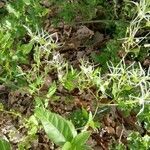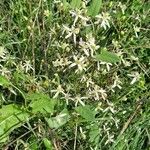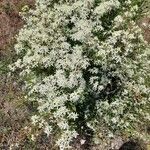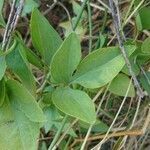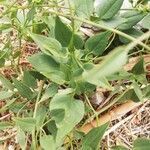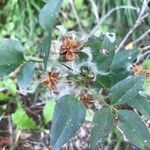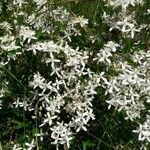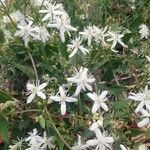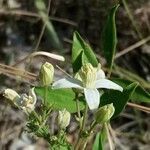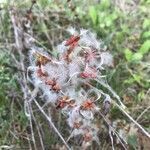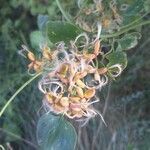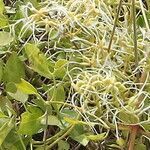Deciduous woody climber; stem terete, weakly ribbed. Lvs very sparsely hairy, green, 2-pinnate, (5)-8-15 × 3-12 cm; leaflets quite thick, ovate to lanceolate, cuneate to truncate at base, acute to obtuse; margin entire or rarely 2-3-lobed; petiole glabrous, (1)-4-5 cm long. Fls erect, ☿, in large compound dichasial cymes. Bracts paired, spathulate to subulate, free, inserted about middle of pedicel. Sepals 4, valvate, white, glabrous above, hairy beneath especially near margins, oblong, obtuse, 8-12-(14) × 3-4 mm. Anthers 2.5-4 mm long; filaments glabrous, linear. Achenes compressed, hairy, 5-6 mm long; style 3-4 cm long at fruiting.
A climber. It loses its leaves during the year. It grows 5 m long. The leaves are twice divided. The leaflets are oblong. Sometimes they have 3 lobes. The leaves do not have teeth. The flowers are white and 15-30 mm across.
